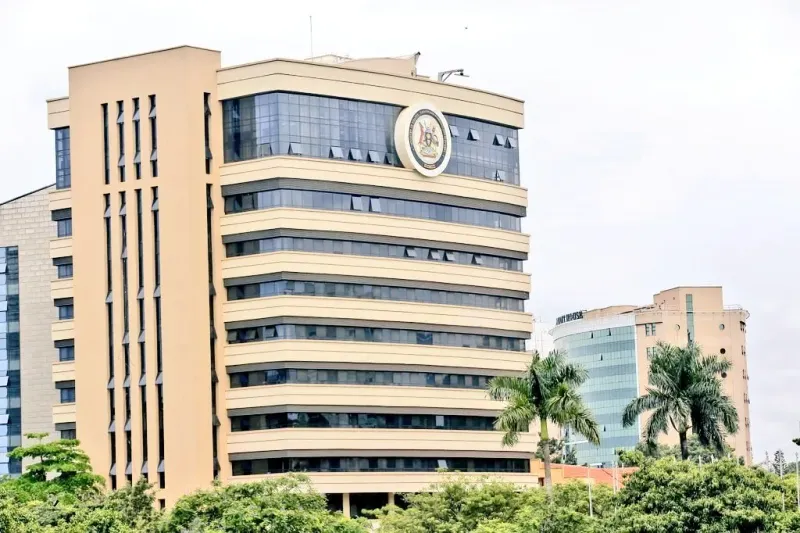
Uganda’s economy continued to display resilience in October 2025, supported by improving business conditions, a stronger currency, and easing inflation. Data from various high-frequency indicators point to rising domestic demand, better investor sentiment, and a favourable external environment.
Shilling Maintains Strong Growth Momentum
The Ugandan Shilling recorded yet another month of appreciation, strengthening for the sixth consecutive time since May 2025. It firmed by 1.3 percent to an average mid-rate of Shs 3,463.86/USD, up from Shs 3,507.79/USD in September. Authorities attribute this to “increased foreign exchange inflows from offshore investors, remittances, and export receipts particularly coffee, which outstripped demand for the US dollar.”
The currency also registered notable gains against major global currencies, appreciating 2.3 percent against the British Pound and 2.1 percent against the Euro.
This stability was complemented by reforms in financial markets, including the adoption of the Global Master Repurchase Agreement (GMRA) and the FX Global Code, which enhanced liquidity and transparency. Uganda’s strong performance was reflected in its ranking 3rd out of 29 African countries in the Absa Africa Financial Markets Index (AFMI) 2025.
Inflation Declines as Food and Service Prices Ease
Annual headline inflation fell to 3.4 percent in October, down from 4 percent in September. According to the report, this drop resulted from lower prices of key food items such as bread, eggs, cassava, passion fruits, oranges, and onions.
The story was similar for services, where a slowdown in price increases contributed significantly. For example, accommodation services eased to 3.2 percent from 4.5 percent, while transport services slowed to 1.0 percent from 3.3 percent.
Several manufactured foods also posted price declines, including simsim, bread loaves, cassava flour, eggs, and sugarcane. Meanwhile, some foods, though still increasing in price, exhibited slower rates of growth, such as whole grain maize, beef, and traditionally bred chicken.
Business Sentiment Remains Positive Despite Slight Cooling
Indicators of business confidence and activity signaled continued expansion:
- The Purchasing Managers’ Index (PMI) registered 53.4, slightly below September’s 54.0 but still above the 50-point expansion threshold. The performance reflected “increased aggregate demand,” which supported employment growth.
- The Business Tendency Index (BTI) remained upbeat at 57.80, although less optimistic than September’s 59.10.
- The Composite Index of Economic Activity (CIEA) further strengthened to 182.69 in September, up from 181.40 in August, signaling a revival in domestic demand after earlier declines.
Monetary and Financial Conditions Stay Supportive
The Central Bank Rate (CBR) was held at 9.75 percent for the thirteenth consecutive month, an indication that the monetary authority views current conditions as consistent with stability. Lending rates remained relatively stable, with marginal declines for both shilling-denominated and foreign-currency loans.
Government securities auctions were active, raising Shs 4,379.60 billion from Treasury Bills and Bonds. Yields on 182-day and 364-day bills eased slightly, while the 91-day tenor saw an uptick. Longer-term bond yields largely held steady or increased slightly depending on the maturity.
Credit extended to the private sector grew modestly, rising 1.0 percent between August and September as firms took advantage of improved business conditions.
Exports Rise Sharply but Trade Deficit Widens
Uganda’s external sector presented a mixed picture. Export receipts increased significantly rising 35.8 percent year-on-year to USD 947.33 million in September 2025. This growth was driven by commodities such as gold, coffee, base metals, sugar, cocoa beans, crude oil (excluding petroleum products), oil re-exports, and fish products.
However, imports grew even faster, expanding 43.6 percent over the same period, pushed by increased purchases of mineral products, machinery & equipment, vehicles, petroleum products, and food-related items. This imbalance widened the merchandise trade deficit to USD 511.21 million, both on an annual and month-to-month basis.
Within the East African Community, inflation remained generally contained, and exchange rate movements were mixed across member states. Uganda’s trade deficit with the EAC narrowed on a month-to-month basis but widened compared to the same period in 2024 due to stronger import growth.
Fiscal Operations Reflect Pressure from Lower Revenues
Preliminary fiscal data for October 2025 indicates an overall deficit of Shs 1,479.65 billion, exceeding the programmed Shs 1,352.55 billion. This shortfall emerged from underperformance in domestic revenue, particularly direct and indirect taxes, and lower-than-anticipated grants.
Expenses were slightly above target, driven by higher spending on goods and services and increased transfers to Local Governments. Meanwhile, the net acquisition of non-financial assets undershot planned levels due to delays in disbursements for externally funded development projects.
Outlook
Despite global uncertainties, Uganda’s October 2025 economic performance presented signs of steady momentum. A stronger currency, moderating inflation, and resilient business sentiment all reinforce expectations of continued recovery. However, pressures from widening trade deficits and shortfalls in government revenue may require close attention in the coming months to sustain progress.














Marlene Luwedde
Leave a Comment
Your email address will not be published.